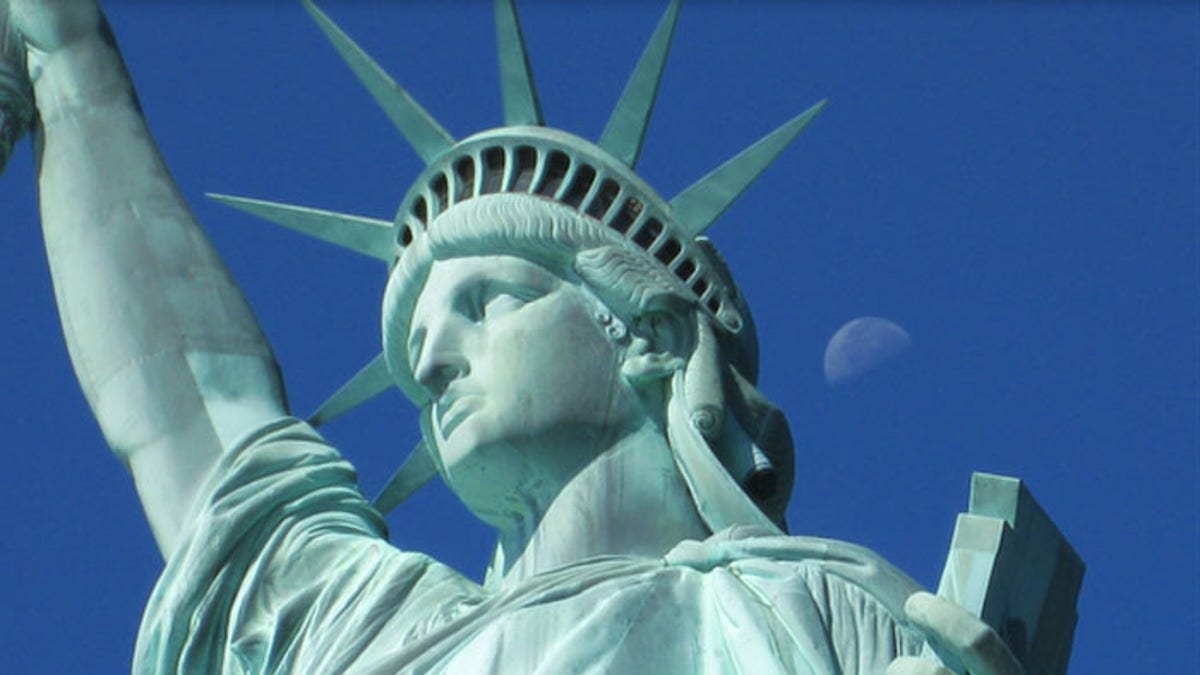
A new theory says the model for Lady Liberty was a veiled Muslim peasant.
Those wagging their fingers at critics of President Obama’s plan to bring thousands of Middle East refugees to the America have an irresistible new talking point: Lady Liberty was Muslim.
The statue’s legendary designer, Frédéric-Auguste Bartholdi, repurposed a lighthouse design rejected by Egypt, according to the theory, and used the same robe-clad woman – minus a veil – as his model for sculptor Gustave Eiffel’s 151-foot statue that has stood in New York Harbor since 1886. If true, that would make the fact that mostly Muslim immigrants from Syria are not getting the red carpet treatment – amid fears of terrorism - deeply ironic, say supporters of the refugees.
“ … there she now stands, the Muslim woman turned to Lady Liberty, the light in her upraised hand symbolizing so much more than simple progress, the inscription at the base words from the poet Emma Lazarus that are familiar to us all,” wrote The Daily Beast’s Michael Daly, helpfully pointing out that only “possibly one” of the terrorists who killed 130 and injured hundreds more in the Oct. 13 attacks in Paris was a Syrian refugee.
“They’re both female figures but they’re not the same figure.”
As lyrical as the claim about the inspiration behind Lady Liberty may be for some, it is historically dubious, according to experts. The torch and tablet-bearing statue has always been believed to represent the Roman goddess Libertas, welcoming immigrants to American shores. Although Daly and others claim that Bartholdi's mental model for the design was the same Egyptian peasant that served as his muse for a proposed Suez Canal lighthouse, two experts have their doubts.
“That’s a serious oversimplification,” Edward Berenson, professor of history at New York University and author of “Statue of Liberty: A Translatlantic Story,” told Canada’s Global News.
Berenson does admit that it is possible Bartholdi used his sketches from the Egyptian project, which was to stand 86 feet high above a 48-foot pedestal and be called “Egypt Carrying the Light to Asia.” But if he did, it was likely just as a starting point, he said.
“There’s a relationship between the Egyptian statue that Bartholdi first conceived in the late 1860s,” Berenson said. “But that statue changed as it migrated to the United States. The original version of the statue made sense for Egyptian society. It wouldn’t have made sense for America.”
Barry Moreno, the historian at the Statue of Liberty National Monument, told Global News Bartholdi’s Egyptian project “had nothing to do with the Statue of Liberty.”
“They’re both female figures but they’re not the same figure,” he said.
Previously, African-American academics have claimed the statue’s model was a was inspired by a black woman. In a book entitled "The Journey of The Songhai People," the late University of Florida professor James Haskins, who was a member of the National Education Advisory Committee of the Liberty-Ellis Island Committee, wrote that the statue was inspired by the role black soldiers played in the Civil War.
President Obama has proposed taking in thousands of mainly Muslim refugees from Syria and other Middle Eastern nations. Critics in Congress say it would be impossible to screen them to keep members of ISIS out, and note that ISIS has said it planned to infiltrate the waves of refugees now flooding Europe. The FBI director and Director of National Intelligence James Clapper have acknowledged that it may not be possible to ensure no terrorists arrive with the refugees.

